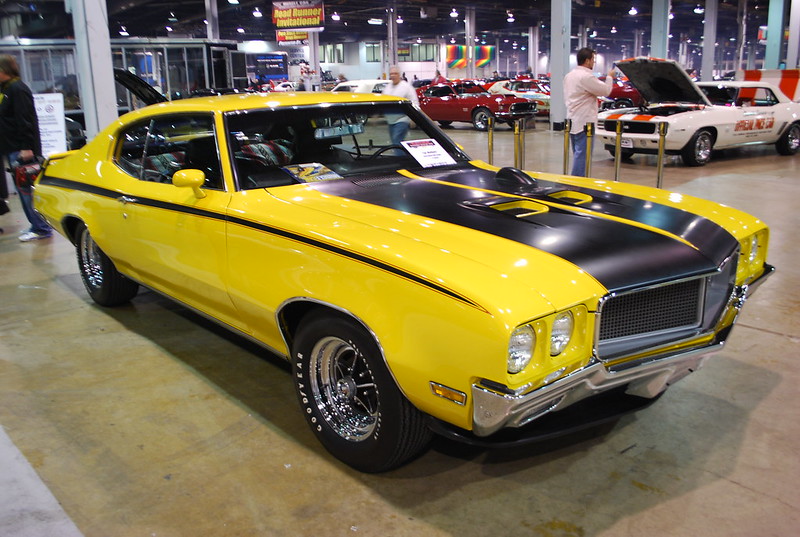America's Favorite Muscle Cars
If there's one thing Americans love, it's their muscle cars. They were first crafted en-masse at the beginning of the 1960s, but the "first" muscle car in America is widely considered the Oldsmobile 88, created in 1949. This gorgeous coupé convertible exemplified American muscle for a generation, until the early 1960s.
Let's look back at some of America's favorite muscle cars, including many that defined a generation or set new standards in the industry.

1969 Dodge Dart GTS 440
The 1969 Dodge Dart had a strange name for a car that struggled to go in a straight line while decelerating. Its massive 7.2L 440 horsepower V8 engine could barely be contained inside the small frame. This meant that Dodge sacrificed power steering and a brake booster while designing it.
Apparently, it was like wrestling with a garden tiller—which is probably what made it so popular. What's a little risk when your reward is this thing?
 Elise240SX, CC BY-SA 4.0, Wikimedia Commons
Elise240SX, CC BY-SA 4.0, Wikimedia Commons
2017 Pontiac Trans Am Super Duty
While it may be called the Pontiac Trans-Am, it's not made by Pontiac. This overhauled version of the Chevy Camaro SS came complete with custom fabrication front-and-back and a screaming chicken on the hood. You might well be doing the chicken dance across the road, as the 2017 Trans Am Super Duty will reportedly produce 1,000 horsepower.
 Bubba73, CC BY-SA 3.0, Wikimedia Commons
Bubba73, CC BY-SA 3.0, Wikimedia Commons
1968 Mercury Cyclone
The 1968 Mercury Cyclone stripped away the trappings of the Ford Fairlane bodywork, replacing it with the swooping lines of a Ford Torino instead. There were a couple of engine options: a 302 V8 or an even more powerful 427 V8, which produced 390 horsepower. Mercury also produced an ultra-rare convertible option with a four-speed transmission.
 Michael Spiller, CC BY-SA 2.0, Wikimedia Commons
Michael Spiller, CC BY-SA 2.0, Wikimedia Commons
Nothin' Fancy With The 1966 Chevy Biscayne
And we mean, nothing fancy. To save weight in the '66 Chevy Biscayne, Chevrolet did away with power seating and windows, laid down cheap carpets and seating, and didn't have any hood scoops or other indicators of a powerful muscle car. But get behind the wheel? You found out very quickly what the L72 V8 engine could do: 425 horsepower, and 0 to 60 in just over six seconds.
 Sicnag, CC BY 2.0, Wikimedia Commons
Sicnag, CC BY 2.0, Wikimedia Commons
Drag Strip Domination In The 1964 Dodge Polara
Built for speed and acceleration, the 1964 Dodge Polara (an obvious nod to the Polaris star, space race and all that) was a dominant force in drag racing in the mid-1960s. Good for between 425 and 550 horsepower, the Polara 500 (the drag racing tuned version) did a quarter mile in just 12 seconds.
 Greg Gjerdingen, CC BY 2.0, Wikimedia Commons
Greg Gjerdingen, CC BY 2.0, Wikimedia Commons
Jay Leno Beefs Up A 1966 Oldsmobile Toronado
Ignoring the purposeful misspelling of "tornado" for a moment, car enthusiast and talk show host Jay Leno decided that the stock version of the 1966 Oldsmobile Toronado, a 7.0L V8 stunner offering 385 horsepower wasn't enough for him. Instead, he fitted a twin-turbo 425 cubic-inch engine in that thing and produced an absolutely staggering 1,070 horsepower. While this was never a production car and only appeared on Jay Leno's Garage, it's still one of our favorites.
 Greg Gjerdingen, CC BY 2.0, Wikimedia Commons
Greg Gjerdingen, CC BY 2.0, Wikimedia Commons
The Most Successful Mercury
The 1968 Mercury Cougar GT was Mercury's most successful launch of a muscle car in the company's history. They sold 150,000 units of the Cougar GT in 1967, building a high-spec muscle car that looked the part, too. With a hood scoop, rotating headlamps, and a front grille that screamed "muscle", the car's 390 cubic-inch V8 Marauder engine produced 320 horsepower and went from 0 to 60 in a stunning eight seconds.
 Sicnag, CC BY 2.0, Wikimedia Commons
Sicnag, CC BY 2.0, Wikimedia Commons
Super Bee Summer
Bryan Adams didn't write "The Summer Of '69" about the 1969 Dodge Coronet Super Bee A12 (because that would have been a strange lyric), but summer of 1969 was when the Coronet Super Bee was released and featured a brand-new innovation: three two barrel carburetors, providing a stunning 390 horsepower from a V8. It also featured a hood scoop, but was overall a medium-sized muscle car, aimed at mid-level consumers.
Bossin' It With The 1970 Mustang Boss 429
Costing a whopping $4,000 in 1970 (about $33,000 today), the 1970 Mustang Boss certainly lived up to its name. It was capable of producing 375 horsepower and searing over a quarter mile in 14 seconds, but its top speed was an impressive 120 miles per hour, especially impressive for such a boxy car. Ford only produced less than 1,400 of these between 1969 and 1970, making them a rarity in today's muscle car collector world.
 Bob P. B., CC BY 2.0, Wikimedia Commons
Bob P. B., CC BY 2.0, Wikimedia Commons
A Beefier Oldsmobile Cutlass
The Oldsmobile Cutlass was a classic, but the engineers at Oldsmobile weren't satisfied: They wanted something somehow beefier. So, they produced the Oldsmobile 442 W-30 Convertible in 1970. This beast featured a four-barrel carburetor, a four-speed manual transmission, and a 455 cubic-inch V8 that produced 370 horsepower. Oldsmobile produced 3,100 of these classics, with only 264 produced as convertibles. Cool and rare? That was the Oldsmobile 442 W-30 for you.
 Greg Gjerdingen, CC BY 2.0, Wikimedia Commons
Greg Gjerdingen, CC BY 2.0, Wikimedia Commons
The Fastest Pontiac Ever
The 1973 Pontiac Firebird TransAm SD-455, with a Super Duty engine kit, was the fastest Pontiac ever built at that time. The engine in this behemoth produced more than 400 horsepower, but you could also buy a racing model that included a modified intake manifold, a re-tuned engine, and a more aggressive camshaft—this tuning created more than 600 horsepower from the same engine.
 Sicnag, CC BY 2.0, Wikimedia Commons
Sicnag, CC BY 2.0, Wikimedia Commons
A Buick That Was Faster Than A Lamborghini
Yes, really. The 1987 Buick Grand National X—the "x" standing for "experimental" was once faster than a Lamborghini Countach. All that from a 3.6L V6 engine that produced just 276 horsepower. Limited by the government's manufacturing regulations to just 120 miles per hour, but unrestrained, it could do between 152 and 162 miles per hour. It beat the Lamborghini from 0 to 60, accomplishing it in just 4.7 seconds, while the Lambo took 5.4 seconds.
 MercurySable99, CC BY-SA 4.0, Wikimedia Commons
MercurySable99, CC BY-SA 4.0, Wikimedia Commons
The GT Extra, Read All About It
As the "GTO" name was under lock and key thanks to Pontiac, Plymouth had to name their muscle car extraordinaire the "GTX" or "GT Extra". And it certainly was "extra", with only 30 of the 3,000 manufactured units featuring the staggering V8 Hemi engine that produced 426 horsepower and could do 0 to 60 in 5.5 seconds.
 Mr.choppers, CC BY-SA 3.0, Wikimedia Commons
Mr.choppers, CC BY-SA 3.0, Wikimedia Commons
Ford Tries To Reclaim The "King Of Speed" Moniker
The 1970 Ford Torino King Cobra (yes, that's its full name) was Ford's attempt to reclaim the "King Of Speed" moniker in 1970, having lost out to the Dodge Daytona and Plymouth Superbird. Despite adding a 429 cubic-inch V8 that produced 700 horsepower, the Ford engineers' bodywork—a streamlined aerodynamic piece of metal and a lower front grille to increase airflow, but critically omitting a rear spoiler—meant that the Torino King Cobra was difficult to drive. Only three were produced as Ford quickly scrapped the project.
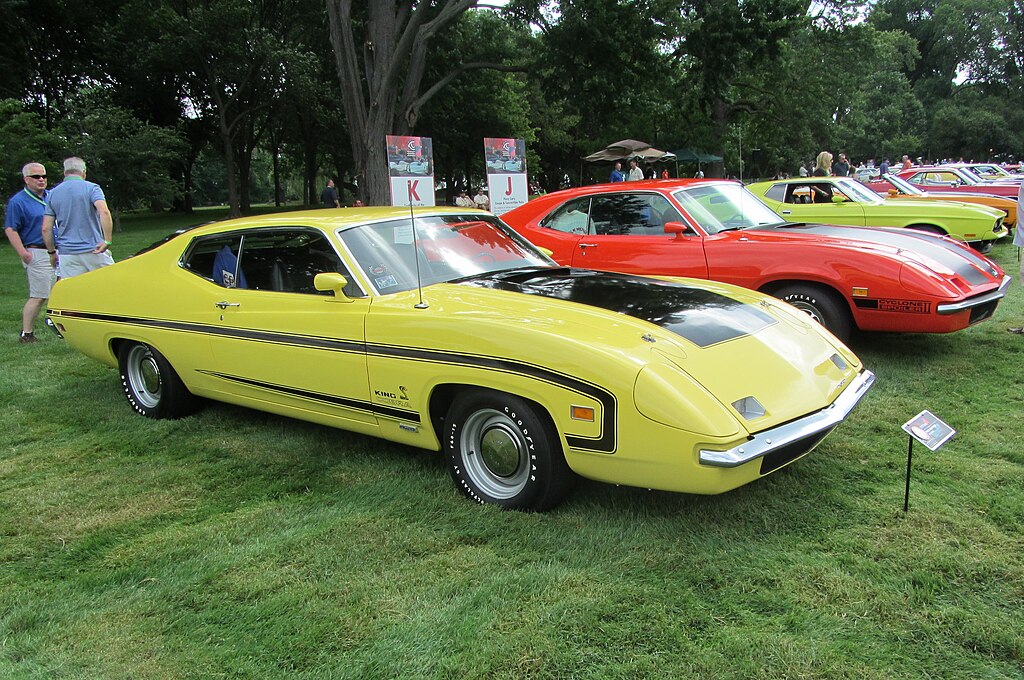 JOHN LLOYD, CC BY 2.0, Wikimedia Commons
JOHN LLOYD, CC BY 2.0, Wikimedia Commons
A Buick GSX With Performance To Go With Its Looks
The 1970 Buick GSX wasn't just a handsome-looking car—clad in Saturn Yellow with black accents and a black hood (with a hood scoop, because you know, the '70s), it could perform well too. Under that sleek body and hood was a 455 V8 that produced 355 horsepower. Its 510 lb-ft of torque was the highest in any muscle car at the time.
The Galaxie 500 Could Do It All
The Ford Galaxie was a well-loved family sedan and everyday driver, but when Ford unveiled the 1966 model year, it upped the ante. Introducing their new 7.0L Thunderbird V8 engine, it produced 360 horsepower and could go from 0 to 60 in 6.8 seconds, making it a prime candidate for drag racing and NASCAR.
A Bolt From The... White?
Not quite a "bolt from the blue", but rather a white coloring on offer for the 1964 Ford Fairlane Thunderbolt. Designed to compete in the NHRA Super Stock series, only 100 of these homologation specials were ever built. They're fitted with a 7.0L V8, producing between 425 and 500 horsepower and running 0 to 60 in just 4.7 seconds. It ended up winning the 1964 Super Stock Series races.
 Sicnag, CC BY 2.0, Wikimedia Commons
Sicnag, CC BY 2.0, Wikimedia Commons
A Beloved Catalina Super Duty
The 1963 Pontiac Catalina Super Duty trim was beloved by most owners of this classic two-door sedan. It was built using a 421 High Octane V8 engine that produced 370 horsepower. Unfortunately, General Motors was banned from racing by their management teams due to engine failure problems.
The Gorgeous Chevelle SS
The Chevelle SS is one stunning automobile, perhaps none more so than the 1970 Chevelle SuperSport without the roof. With the incredible lines in the design, the classic front grille and dual recessed headlights, the gorgeous black and red paint job—oh, and the limited convertible option—it was one of Chevrolet's best-selling vehicles in 1970. 51,455 cars rolled off the line, but only 1,100 of these were convertible units.
The Judge
Known as "The Judge", this 1969 Pontiac GTO was a convertible model that boasted a hood scoop, a gorgeous chrome grille, and a low-cut rear spoiler that matched the orange paintwork. Under the hood, it sported a V8 that delivered 366 horsepower, propelling The Judge to 60 miles per hour in just 5.1 seconds.
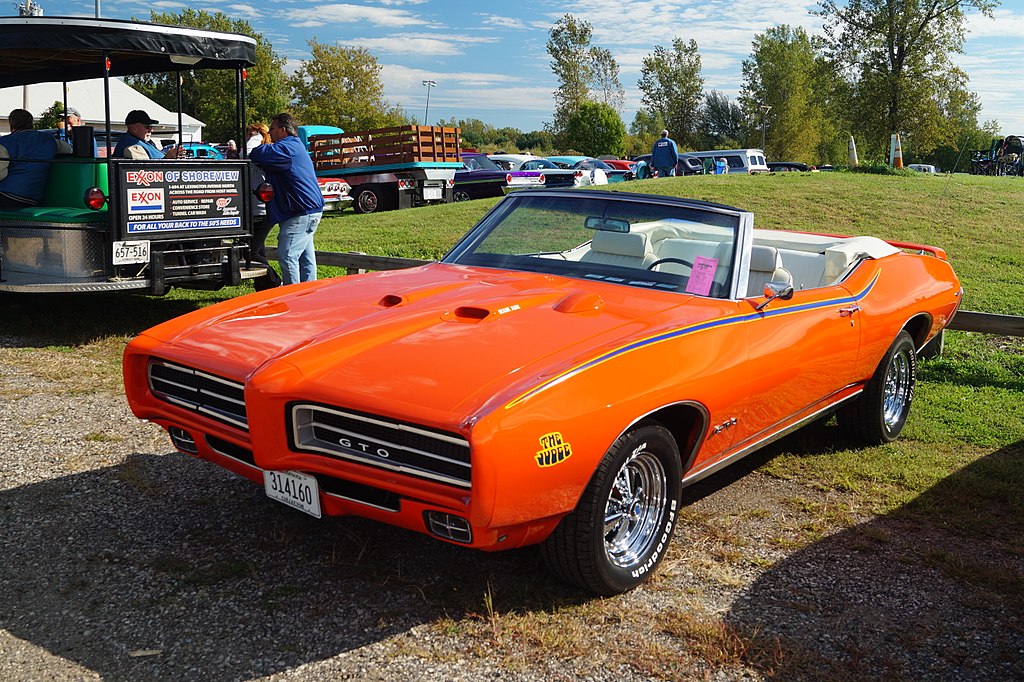 Greg Gjerdingen, CC BY 2.0, Wikimedia Commons
Greg Gjerdingen, CC BY 2.0, Wikimedia Commons
Superbird? Supercar, More Like
The 1970 Plymouth Road Runner Superbird was the 1970 American muscle car that defined that model year. The huge rear spoiler and stylish front end might have attracted eyeballs, but what was under the hood was more important. The Road Runner—a hat-tip to Looney Tunes—sported a twin-carburetor V8 that produced between 425 and 433 horsepower and went from 0 to 60 in under five seconds.
The Ultra Rare Chevy Camaro ZL1
Chevrolet only produced 69 of the 1969 Chevy Camaro ZL1, making it one of the rarest American muscle cars out there. Whenever one comes up at auction, it usually sells for high three-figure sums, or even over $1 million. At the time, the 1969 ZL1 was the fastest production car made by Chevy, producing a staggering 525 horsepower and covering a quarter-mile in just over 11 seconds.
The Jumbo Jet Of NASCAR
In 1969, the "Big Three"—Chevy, Ford and Dodge—were competing to produce the lightest, most aerodynamic NASCAR racer. For their part, Dodge produced the 1969 Charger Daytona for a run of just 505 units. A 7.0L engine growled out 425 horsepower and its rear spoiler looked like it had torn off a jet airliner. It was capable of doing 200 miles per hour on the oval track. Blink and you'll miss it.
 Sicnag, CC BY 2.0, Wikimedia Commons
Sicnag, CC BY 2.0, Wikimedia Commons
No Screaming Chickens On This Firebird
Screaming chicken lovers had to wait till 1976 to get the "screaming chicken" livery, but not to get a precursor of the power that version of the Pontiac Firebird produced. That's because Pontiac produced the 1969 Firebird Convertible. It walked and talked like a Camaro SS, which may be part of the reason why it sold 11,000 units.
 Sicnag, CC BY 2.0, Wikimedia Commons
Sicnag, CC BY 2.0, Wikimedia Commons
Dodge's Engine Experiments In The Challenger R/T
In 1970, Dodge decided to see what would happen if you put a 7.2L V8 into its Challenger R/T Convertible. Face-tearing speed is what happened. The thing screamed off the line, doing 0 to 60 in just six seconds, and had an astonishing top speed of 146 miles per hour. Despite producing 2,921 of these, only 99 had the three two-barrel carburetors installed, giving it an incredible 390 horsepower.
 Greg Gjerdingen, CC BY 2.0, Wikimedia Commons
Greg Gjerdingen, CC BY 2.0, Wikimedia Commons
Out Of Fashion, But In Our Hearts
When Plymouth released the 'Cuda Convertible in 1971, big-time American muscle of the previous decades was out of fashion and insurance rates had made it difficult to get a gas-guzzling muscle car. But, the well-loved Plymouth 'Cuda still makes the list of favorites as only a dozen were ever sold.
 Greg Gjerdingen, CC BY 2.0, Wikimedia Commons
Greg Gjerdingen, CC BY 2.0, Wikimedia Commons
Feeling Risky? Try A Dodge Viper
Of course, every great muscle car list has to have a Dodge Viper on it. This car had an 8.0L V10 engine under the hood, which roared out 400 horsepower and did 0 to 60 in just 4.5 seconds—but it's what was lacking from the Viper R/T that made it special. No airbags, no ABS, and no traction control. If you got it wrong? Woe betide you.
 Alexander-93, CC BY-SA 4.0, Wikimedia Commons
Alexander-93, CC BY-SA 4.0, Wikimedia Commons
Carroll Shelby's Quest For Perfection
Maybe Carroll Shelby wasn't a perfectionist, but he sure produced cars like he was. None more so than the 1965 Shelby GT 350 R. This beast complied with American Racing spec standards (hence the R) and produced 365 horsepower. It had the fastback coupé rear and a hood scoop option. It came in only one color: white with blue racing strips from front to back. Nevertheless, it was one of America's favorite muscle cars from a decade filled with them.
 Sicnag, CC BY 2.0, Wikimedia Commons
Sicnag, CC BY 2.0, Wikimedia Commons
Carroll Shelby Produced Just Two Of These
Imagine creating just two of anything. Let alone spending however many hundreds of thousands or millions of dollars on production. Well, Carroll Shelby did just that on the Shelby Cobra 427 Super Snake. He produced two of these cars, and only one remains. It sold for $5.5 million in a 2021 auction, but that's not the highest-priced one: The other sold for $13,750,000.
It's one of America's favorite muscle cars—and also happens to be one of its rarest.
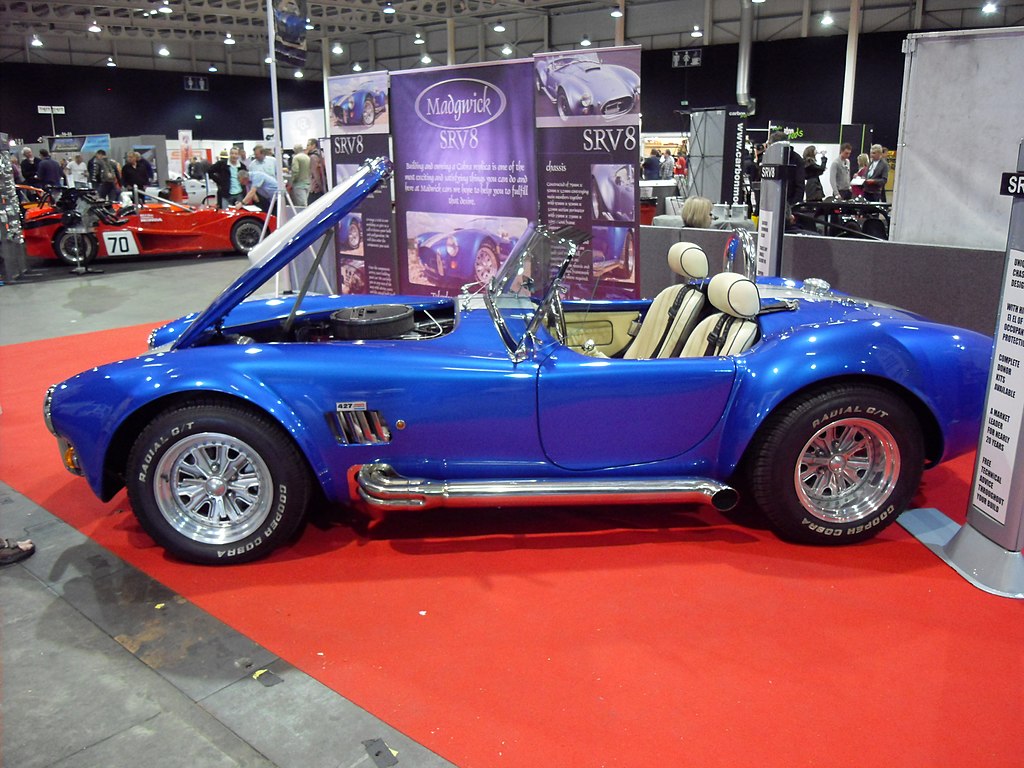 Father.Jack, CC BY 2.0, Wikimedia Commons
Father.Jack, CC BY 2.0, Wikimedia Commons
The Ultra-Rare AMC AMX III
Imagine looking at a De Tomaso Pantera and going: "We could make that". Well, AMC did just that in 1969 to craft one of the finest-looking muscle cars of its generation: the AMC AMX III. This mid-engine 6.4L V8 didn't just look fast—it was fast. It produced a top speed of 170 miles per hour (with a spoiler), and did 0 to 60 in 4.8 seconds.
Unfortunately, after dumping $2 million into the project, AMC produced just six of these look-fast/go-fast muscle cars.
The Very Worst American Muscle Car
Despite expecting great things from the Ford Mustang II, buyers and critics were heavily disappointed in 1974, when Ford released the vehicle. It only ran for four years and never lived up to the hype of the original Mustang. It produced only 150 horsepower and despite Ford's "window dressing" of a flaming cobra on the hood and a rear spoiler, they couldn't stop the poor reviews and dwindling sales figures.
Ford ceased production of the Mustang II in 1978, after only selling 1.1 million cars in four years.
Did you own a Ford Mustang II? What was your favorite American muscle car? Let us know in the comments below!
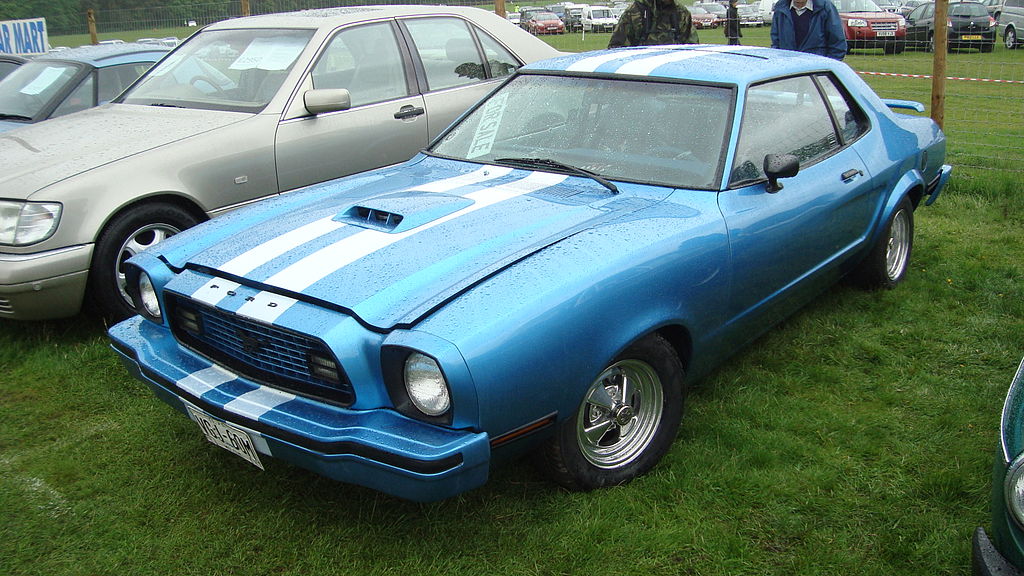 Kieran White, CC BY 2.0, Wikimedia Commons
Kieran White, CC BY 2.0, Wikimedia Commons



